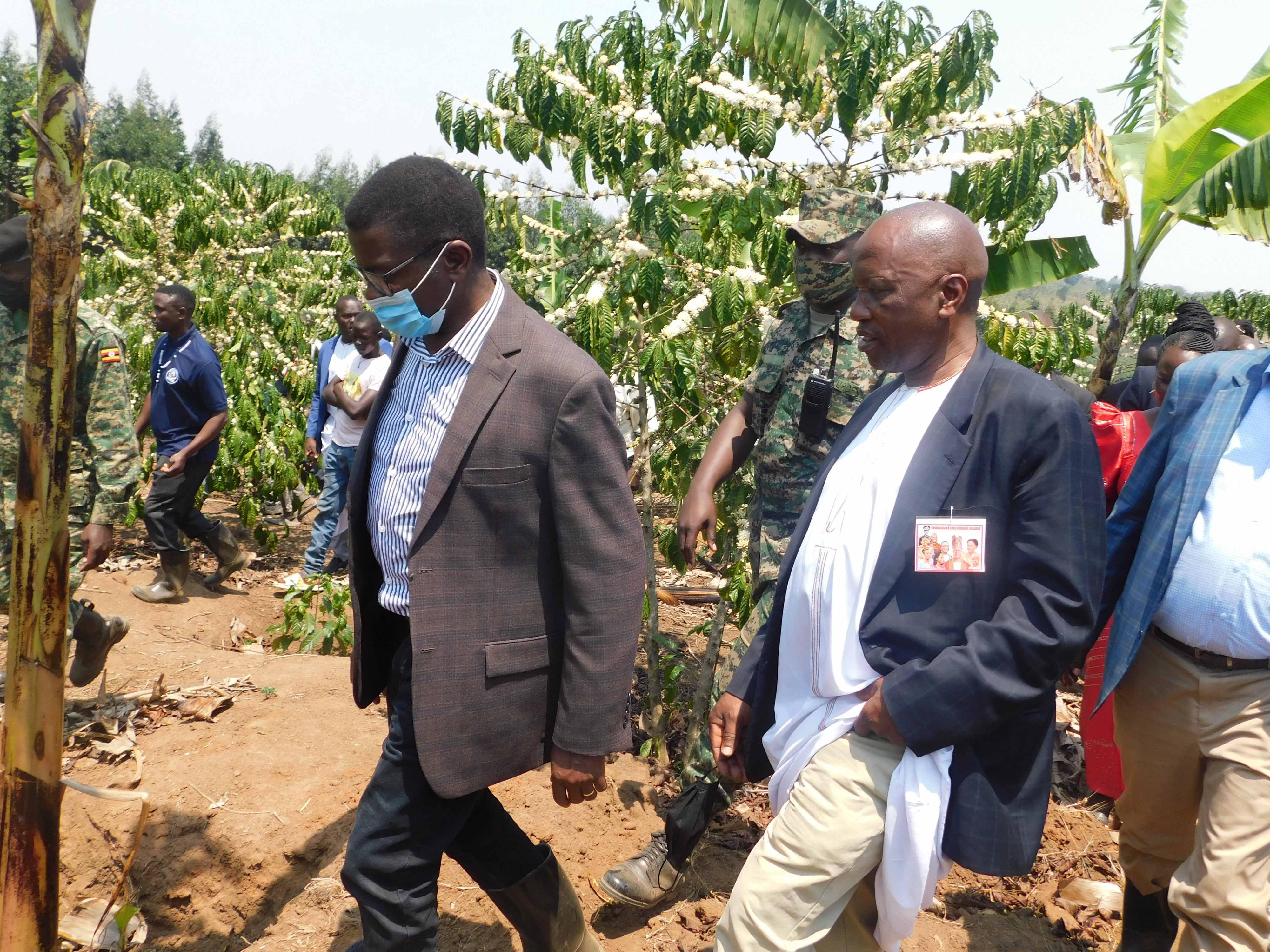Buganda’s love affair with coffee

Ntambaazi shows Katikiro Mayiga around his plantation.
What you need to know:
- The blood oath sees two beans removed from the coffee berry before each man moistens them with his blood. They then swap them before consumption. Maina argues that it is possible this blood oath could have popularised the practice of offering coffee cherries to guests for chewing. For this purpose, the cherry is picked just before it is ripe, steamed and then smoke-dried.
The vast bulk of robusta coffee in Buganda is grown around the Lake Victoria crescent. In his book, Coffee in Buganda, 1955, James W. Maina notes that robusta coffee has for long been known to the Baganda and was used in the ritual of “blood-brotherhood.”
The blood oath sees two beans removed from the coffee berry before each man moistens them with his blood. They then swap them before consumption. Maina argues that it is possible this blood oath could have popularised the practice of offering coffee cherries to guests for chewing. For this purpose, the cherry is picked just before it is ripe, steamed and then smoke-dried.
Coffee chewing was recorded from the time of John Speke in 1865, and still remains a significant habit. When a visitor arrives, they are often given some coffee to chew.
Until the beginning of the 21st Century, no Muganda planted a coffee tree in their own garden. This was always done by a visitor. By then, coffee had not assumed its present economic significance.
As for Arabica coffee, which is grown at high altitudes ranging between 1,300-2,300m, it was brought from Morogoro to Handere near Bombo in 1900 by Father Moullec whilst, Maina reveals, “returning from leave by the old caravan route.” The Catholic Fathers managed to raise two plants from which seeds were later obtained for distribution to interested farmers.
The policy of encouraging the native robusta industry was inaugurated in 1923, during which natives were supplied with “number nine selection.” At that time, the Ssese Islands were an important source of planting material from which seedlings for Buddu County—which is now the highest coffee producing county in Buganda—were obtained. By 1925, three hundred-thirty eight acres had already been planted. Of these, 169 were in Mengo and the other half in Masaka District. To this day, these remain the two major coffee districts of Buganda.
Coffee production in 2021/2022 financial year was 8.4 million (60kg) bags, while exports stood at 6.3 million bags valued at $862m (about 3.3 trillion).
Production would have been higher, but a persistent drought affected mostly Robusta-growing regions.
Quick facts about Coffee in Uganda
Cofee production per region
● South western region: 11 percent (941.949 bags)
● Central region: 35 percent (2.9 million bags)
● Eastern region: 24 percent (2.03 million bags).
● Western region: 24 percent (2.042m bags).
● Karamoja (16,341 bags)
● Northern region: Six per cent (516.530 bags).
Source: UCDA by the end of July 2022





